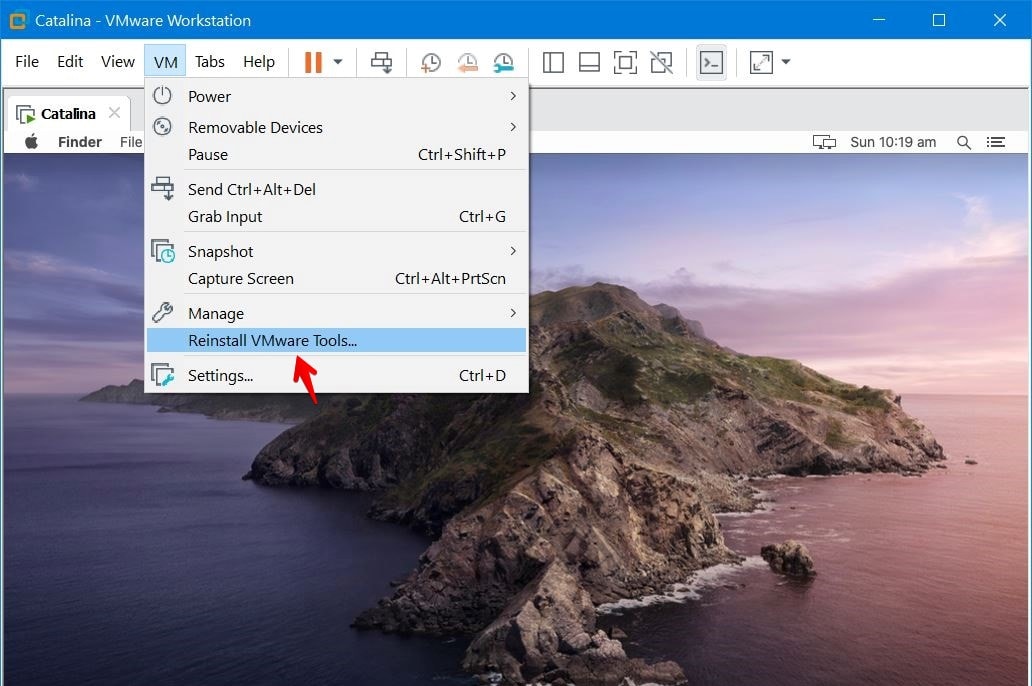

- #Vm view client for mac how to
- #Vm view client for mac mac os
- #Vm view client for mac software download
- #Vm view client for mac install
#Vm view client for mac software download
Installation: Visit the VMware Horizon download webpage and find the software download link associated with your version of Windows.  If you used the virtual lab last semester, please uninstall the VMware View software.
If you used the virtual lab last semester, please uninstall the VMware View software. #Vm view client for mac how to
If you have already installed the VMware Horizon Client software, see How to Use the Virtual Lab (on PCs).(Instructions are valid for Windows 7 and 8.1. You only need to run this installation once. The virtual lab requires some software to be installed on your computer. You can find instructions on setting up VPN at VPN Setup Instructions. For off-campus access, you will need to first establish a VPN connection.When you are on-campus, you need to use a wired Ethernet connection OR the Middlebur圜ollege wireless network.
#Vm view client for mac mac os
It must run Windows 7 or later OR Mac OS 10.7 or later. You need administrative access to the computer you will use so you can run the one-time installation of VMware Horizon Client software. Students, faculty, and staff can access the virtual environment from any computer, including personal and student computers, as long as it fulfills these requirements: Requirements For accessing the virtual lab During these times ITS may perform scheduled maintenance. The virtual lab computers are available 24/7, with the exception of Sundays from 3AM - 10AM and the last weekend of the year. Refer to the table on go/software?public for the most up-to-date list of installed software. The virtual lab computers run Windows 10 (Enterprise). Software Availability & General Virtual Lab Access To access the virtual computer lab from off-campus, you will need to first establish a VPN connection, then follow the instructions below. This article will guide you through accessing the virtual environment from Middlebury's wired or secure wireless networks. remote connections using the VMware Horizon Client application on personal computers. 
thin-client devices found in various labs and libraries.These virtual computers are available via: This pool of virtual computers is known as the virtual computer lab. Middlebury College has made available a number of virtual computers that allow students, faculty and staff to access a variety of licensed software, providing comparable functionality to a desktop computer. Please contact the ITS Helpdesk with any concerns. 9 Getting Assistance and Troubleshootingīeginning in June 2021, ITS will discontinue the use of the on-premise virtual classroom which is accessed via the VMware Horizon Client from a personal computer or from a "thin client" device on the Middlebury campus and transition fully to the Apporto service.Īpporto is a modern virtual classroom solution and is available to all Middlebury students, faculty and staff at.8 Accessing the Virtual Lab - Linux Information.7.1 How to Use the Virtual Lab (on Macs).

#Vm view client for mac install
7 Install VMware Horizon Client - on a Mac. 6.1 How to Use the Virtual Lab (on PCs). 6 Install VMware Horizon Client - on a PC. 4 Software Availability & General Virtual Lab Access. Opening the Details window through the classic control panel network settings will show the MAC address of the corresponding network adapter.įrom the IPConfig command at the command promptīy using the ipconfig /all command on the command line while you are connected to the VM, you can view the MAC address in the Physical Address entry.įrom the Get-VMNetworkAdapter command on PowerShellīy using the following command from the Hyper-V host (locally or remotely) you can view the MAC address of the VM you specify. In the VM settings window in Hyper-V Manager, expand the network adapter you are interested in, and then in the Advanced Features section, you will see the MAC address of the VM.įrom the network adapter connection details In an open Hyper-V Manager window, you can view the MAC address of the network adapter for each VM on the Networking box, as shown in the figure below. There are many ways to view the MAC address of a virtual machine on a Hyper-V host using the GUI, the PowerShell, and the command line.








 0 kommentar(er)
0 kommentar(er)
